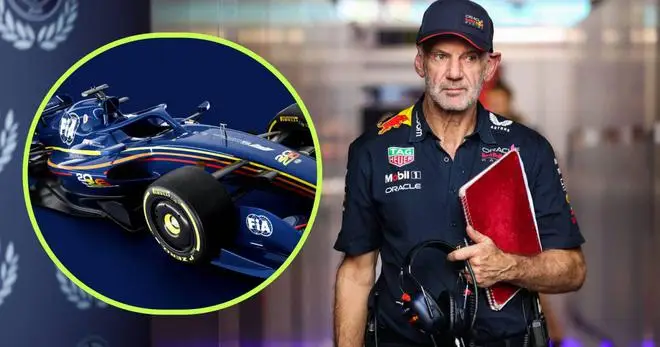Adrian Newey believes that the rule changes coming to Formula 1 in 2026 could make engine regulations the main focus of the competition. These changes are expected to profoundly affect both power unit and chassis design. The updates for the 2026 season will not only involve a comprehensive overhaul of power unit regulations but also significant revisions to the chassis rulebook.
For the first time in F1 history, these sweeping reforms are centered around engine rules. While maintaining the current 1.6-liter V6 architecture, they eliminate the Motor Generator Unit-Heat (MGU-H). Increased electrification and synthetic fuels introduce new technical challenges for manufacturers. Engine output is expected to drop by roughly one-third while electrical output will triple—resulting in higher peak performance levels despite their short duration.
Changes in power unit dynamics necessitate corresponding adjustments in chassis design—leading to significant transformations in car design overall. Current vehicles generate excessive drag which mismatches with new power units—especially noticeable at straightaways’ ends where excess drag slows down speeds considerably. To tackle this issue head-on while enhancing sustainability efforts towards net-zero carbon emissions by 2030—the ratio between internal combustion engines (ICE) & electricity aims towards an even split moving forward.
Chassis designs incorporating active aerodynamics technology aim at maximizing potential from these updated power units—reducing drag along straightaways whilst providing extra downforce when necessary—ultimately targeting lap times approximately one second faster than current models.
However—with implementation looming—teams express concerns over potential technical imbalances arising from these changes; particularly if any manufacturer swiftly masters new rules gaining substantial advantages akin back when hybrid engines debuted back in 2014 where Mercedes led significantly before others caught up years later.
Among those voicing concerns notably includes Adrian Newey—currently Aston Martin’s Technical Director—in his interview with Autosport magazine stating: “Engine regulation changes may pose initial issues since simultaneous adjustments across both chassis & engines are rare historically within F1—especially where chassis rules compensate impacts brought forth by altered power units.”
Recalling his tenure at Red Bull hampered by underpowered Renault engines limiting otherwise competitive vehicles—Newey highlights universal worries among all manufacturers fearing any single entity securing overwhelming advantages via newly imposed regulations thereby diminishing competitiveness overall.
Specifically noting concentrated advantages within internal combustion segments exacerbating issues further—as once any particular architecture secures massive technical edge—it positions said manufacturer dominantly over ensuing years: “Other firms likely learned from Mercedes’ precedent,” remarks Newey—but risks remain regarding initial standout performances dictating subsequent rule dominance via respective powerful units.”
Addressing performance dynamics—Newey mentions catching up becomes challenging should leaders excel internally combustive technologies versus comparatively easier pursuits amidst electrical output competitions allowing lagging firms better opportunities bridging gaps therein instead.
Regarding whether aerodynamic efficiencies sufficiently counterbalance potential engine shortcomings remains uncertain presently admits Newey given limited involvement post-April departure from active F1 engagements thus unfamiliarity surrounding newer detailed regulations yet added preparing Aston Martin return ensures rapid learning adapting thereafter imminently upon resumption therein subsequently accordingly too ultimately overall conclusively therein finally ultimately finally conclusively therein ultimately finally ultimately conclusively therein finally ultimately conclusively therein ultimately finally conclusively therein ultimately finally conclusively therein ultimately finally conclusively therein ultimately finally conclusively therein ultimately finally conclusively therein ultimately finally conclusively therein ultimately finally conclusively therein ultimately finally conclusively therein ultimately finally conclusively therein ultimately finally conclusively therein ultimately finally conclusively therein ultimately finally conclusively therein ultimately finalizing conclusions.”
Working nearly two decades as Chief Technical Officer previously at Red Bull Racing—Newey acknowledges disbelief had anyone suggested departure year prior stating outright impossibility without consideration thereof initially yet upon reflection realizing continued tenure undermined personal honesty thus opting eventual exit thereafter contemplating future career pathways instead accordingly thereafter subsequently overall conclusive finalization.”
9732 个字符
